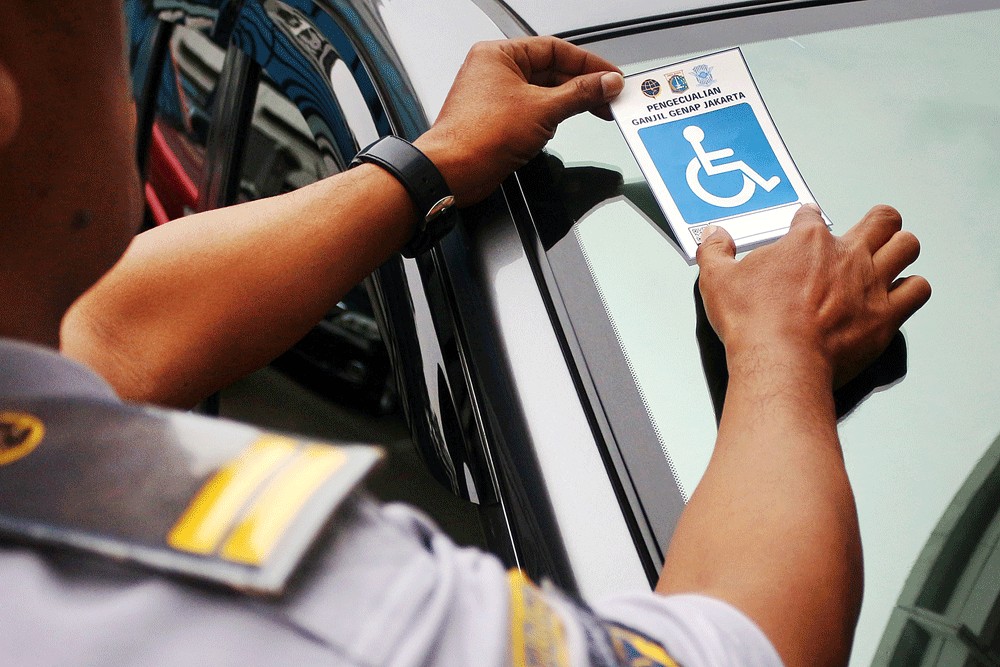Popular Reads
Top Results
Can't find what you're looking for?
View all search resultsPopular Reads
Top Results
Can't find what you're looking for?
View all search resultsTechnology can help equality of people with disabilities
Depending on the disability and rehabilitation goals, assistive technology includes a wide range of technology devices.
Change text size
Gift Premium Articles
to Anyone
T
he ability to perform basic activities of daily living is an essential need for every person. If for some reason the body functions and structures are disturbed, the ability may be reduced or even lost, resulting in what we call disability.
In Indonesia, the most common disabilities so far include impairments of vision, hearing and mobility. Approximately, half of the disabled population has multiple disabilities. Most disabilities are caused by acquired diseases and accidents along with a smaller portion due to congenital factors.
The 2016 national employment survey of Statistics Indonesia (BPS) estimates that 12.15 percent of Indonesia’s population -- or over 265 million people -- have moderate to severe disability. The survey also reveals that 45.74 percent of individuals with disabilities have lower or no education whereas those without disability (87.31 percent of the total population) receive only primary education of averagely 6.5 years.
Disability often restricts participation and interaction in one’s community. People with disability have lower educational attainment and fewer economic opportunities in addition to being marginalized and often even excluded from society. Therefore, participation in the labor market is significantly low for people with disabilities.
The 2016 Law on People with Disability was passed following ratification of the United Nations Convention on the Rights of People with Disabilities in 2011. The law entails Indonesia’ commitment to the eradication of discrimination against people with disabilities and its active support and provision of services to this segment of the population. The new law also raises the principle that public programs be inclusive and accessible to people with disabilities.
In recent years several non-government and government campaigns and programs have also promoted inclusion and equality for people with disabilities. People also join celebrations of the International Day of People with Disabilities every Dec. 3. Another way to increase involvement in education and increase economic opportunities for people with disabilities is through the use of appropriate assistive technology.
The Rehabilitation Engineering and Assistive Technology Society of North America states that assistive technology has been proven to assist people with disabilities, improving their quality of life. With the technology devices specifically tailored to meet the individual’s needs, people with disabilities can improve and optimize their daily functioning, allowing them to become independent, self-sufficient and self-confident.
Depending on the disability and rehabilitation goals, assistive technology includes a wide range of technology devices. For example, individuals with mobility impairments can benefit from wheelchair seating systems, artificial limbs and/or support braces (prosthetics/orthotics) which increases independence. Students with hearing impairments can benefit from assistive listening devices or hearing aids. Those with speech impairments can benefit from text-to-speech output or augmentative communication devices. Specialized computer software and adaptive hardware can equally help employees with cognitive disabilities complete their tasks. Assistive technology can also expand to adaptive driving, home or workstation modifications, all of which are specified according to the needs of each person with a disability. The ultimate goal is to assist their vocational and recreational activities in addition to helping daily routines.
However, access to assistive technology may still be a challenge. The national social economic survey (Susenas) confirms that people with disability throughout Indonesia mostly cannot access assistive technology despite some efforts. Although still inadequate, our government already provides some of the assistive technology devices through the national insurance systems. The national health insurance BPJS Kesehatan for example, covers seven assistive technology devices at a considerably low price. Generally the coverage is so small that a person needs to have additional insurance from local government agencies, self-funding or other sources. An employee who acquired a disability at work can benefit from the new provision of mobility devices and can claim insurance coverage from the national employment insurance (BPJS Ketenagakerjaan).The national employment insurance has also established the “return to work” programs which provides employees with medicine and rehabilitation treatment following accidents or injuries.
Following the World Health Organization (WHO) guidelines, a number of type A or B public and private hospitals with rehabilitation centers, private companies and non-government organizations are supplying technologies for individuals with disabilities. Providers of assistive technology devices are promoting modalities that include prosthetics/orthotics, mobility aids, wheelchair and seating systems. Some devices have become commercially available over the counter such as hearing aids, speech output devices and mobility aids.
These assistive technology devices can help fulfill the life goals of people with disabilities particularly by allowing active participation and interaction in education and employment. Schools and employers should also be willing to adapt and accommodate the needs of their students and employees with disabilities. Moving forward, Indonesia’s government and citizens should become advocates for individuals with disabilities by promoting inclusion and equality in every day aspects of life. Apart from ending stigma and discrimination against them, assistive technologies can become among the catalysts to help our country become truly inclusive for all.
***
The writer is a Fulbright scholarship recipient and a student in rehabilitation technology at the University of Pittsburgh School of Health and Rehabilitation Sciences, Pennsylvania, United States. (https://aminef.or.id/satria-ardianuari/)










